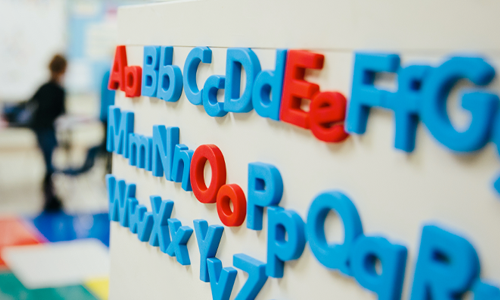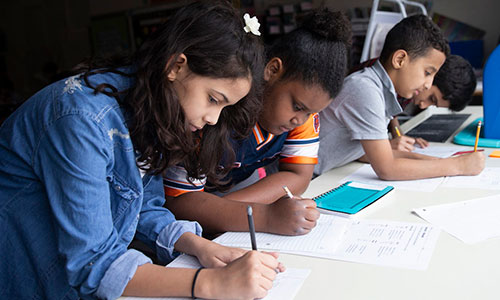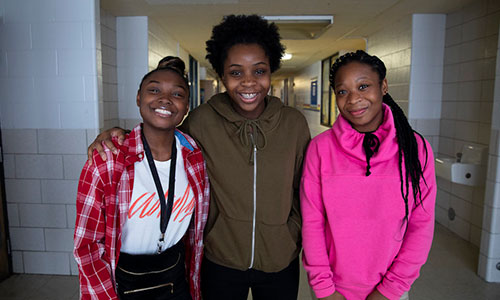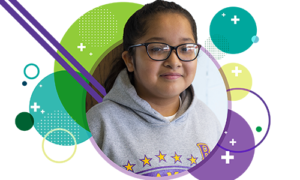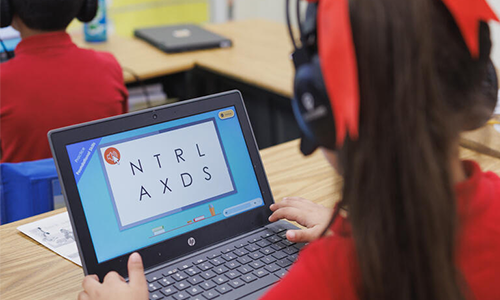
When I was in graduate school at Purdue University, I worked on a project recruiting Hispanic students from low-income families for free Saturday gifted and talented enrichment programs. I went to local schools with large numbers of low-income and Hispanic families and asked principals to recommend some children. At one of the schools, where nearly 100 percent of students were from low-income families, the principal was shocked that I’d even ask. “We don’t have any gifted kids here,” he said.
I’ll never forget this experience for several reasons, but especially because of what I’ve learned since then: there aregifted kids—those who are underchallenged and could do more—in every school. And I don’t mean this as some kind of platitude. Research my colleagues and I conducted showed that the “typical” classroom contains seven grade levels of readiness or all four possible international benchmarks in math. What’s more, this isn’t because classrooms are tracked, leaving some very high and others very low scoring.
The majority of academic diversity in a school is present in every classroom. Every school, and nearly every classroom, has advanced learners who could do more.
Serving kids post-COVID
Schools across the country are working hard to help students rebound from the COVID-19 pandemic and in response to new initiatives such as Read by Grade 3 or Third Grade Reading Guarantees. These policies are important as they respond to concerning trends among students scoring at the lowest levels.
I worry that one unintentional side effect of such efforts, especially in schools with large populations of students of color or who come from low-income families, is decreased attention to students who are underchallenged in school. A recent paper in the American Education Research Journal found that in Los Angeles Unified School District, 72% of students who were eligible for advanced seventh-grade math but did not enroll in the course did so because there were not enough sections (or no sections at all).
Advanced learning opportunities should not—and cannot—be a privilege for select schools both because these students exist in all schools and because the result would be increasing disparities at the advanced end of the achievement spectrum. I know from my work that excellence gaps (the differing rates of advanced achievement between student groups) have exploded since the year 2000 (and were even worse in 2024), in large part because of rapid increases in the rate of advanced achievement among Asian American, white, and higher-income students. If students of color and those from low-income families do not have access to advanced learning opportunities because their schools are focused on remediation, excellence gaps will continue to grow.
The problem with using national data
Luckily, there is a relatively easy way, especially for schools that use MAP® Growth™, to identify which students might be underchallenged.
MAP Growth is a computer-adaptive assessment of student achievement and growth in math, reading, language usage, and science. Due to its computer-adaptive design, it can provide accurate data on student achievement, even at levels far above grade-level standards.
Typically, gifted students are identified if they score above some preset national percentile (e.g., the 95th percentile in Illinois and the 98th percentile in Nevada). There are two problems with identifying students in this way. First, this method results in and perpetuates inequity. The students identified as gifted using national normative percentiles will not mirror the racial, ethnic, or socioeconomic diversity of their home districts or schools. The application of national norms will continue to identify as gifted the students who have already had the most opportunities to develop their potential and will do little to identify yet-underdeveloped talent.
Second, national percentiles just don’t tell us that much about who is underchallenged because they don’t take local context into account. Yes, a student scoring at the 95th percentile in math is clearly very advanced. But if most of their peers at school are also scoring at that level, then odds are they don’t require any supplemental services because the baseline instruction is higher. This is no sure thing, but one would hope that if half of a school’s third-graders are scoring at the 95th percentile nationally, then that school is teaching more advanced content than what’s in third-grade content standards.
Use local norms for talent spotting
A better approach to identifying advanced learners is to use district- or school-level norms.
Instead of asking how a student performs compared to other same-grade peers across the country, district or school norms ask how that student is performing compared to same-grade peers in the same district or school. Knowing if Marta is the most advanced math student in her school is much more instructionally useful than knowing if she’s at the 94th percentile nationally. The former is a better indicator of whether she’s underchallenged in her current learning environment.
Just as importantly, these alternative normative comparisons (often called local norms) yield a much more diverse population of advanced learners than do national norms. If honors courses, accelerated programs, early algebra, or gifted and talented programs were based on local norms, the population of students given those advanced learning opportunities would be more diverse.
Finally, more schools “have” gifted students when identification is based on local norms. A few years back I worked with a district where several of the Title I buildings identified zero students as gifted. After moving to local norms, every school had gifted kids. In another MAP Growth partner school, the average second-grade math score was 163, right around the 18th percentile nationally. But in that same school was a student who scored a 190, the 87th percentile nationally and the highest score in her grade. The 87th percentile might not get that student identified for a typical talented and gifted program anywhere in the country, but she’s a textbook example of a student who is likely underchallenged as her school focuses on bringing more students up to grade level (so, to a score of 179).
Moving forward
The fact is that students of any grade level are very diverse in what content they have mastered and what they need help to learn. It’s hard for one teacher to challenge third-graders who are learning single-digit addition and subtraction as well as those learning pre-algebra, for example.
Multi-tiered system of supports approaches are interested in flagging students for additional services or intervention when their current learning environment isn’t enough. Local norms do just that. They tell a school which students are most likely to need additional support because they are outliers in their instructional context. Not only is that an important goal on its own, but local norms also help to identify more diverse talent.
Schools interested in learning more about the topic of local norms, including specific details on how to implement them as a talent-spotting strategy, can see a 2021 article to which I contributed. Also check out our resources outlining how MAP Growth can be used as part of gifted and talented identification systems, how it can be used as a universal screener, and how it can be used to identify who is ready for early Algebra 1.

